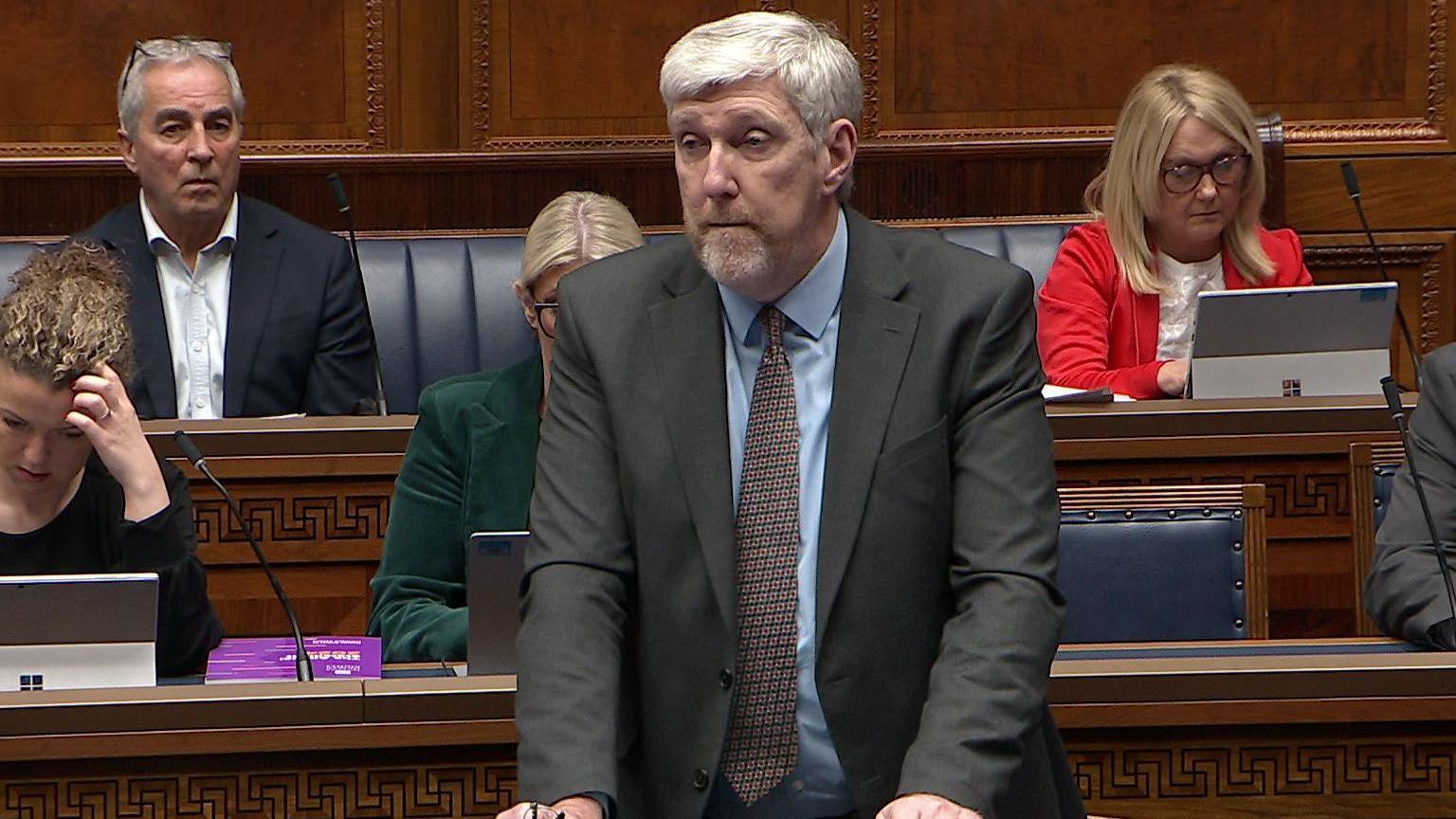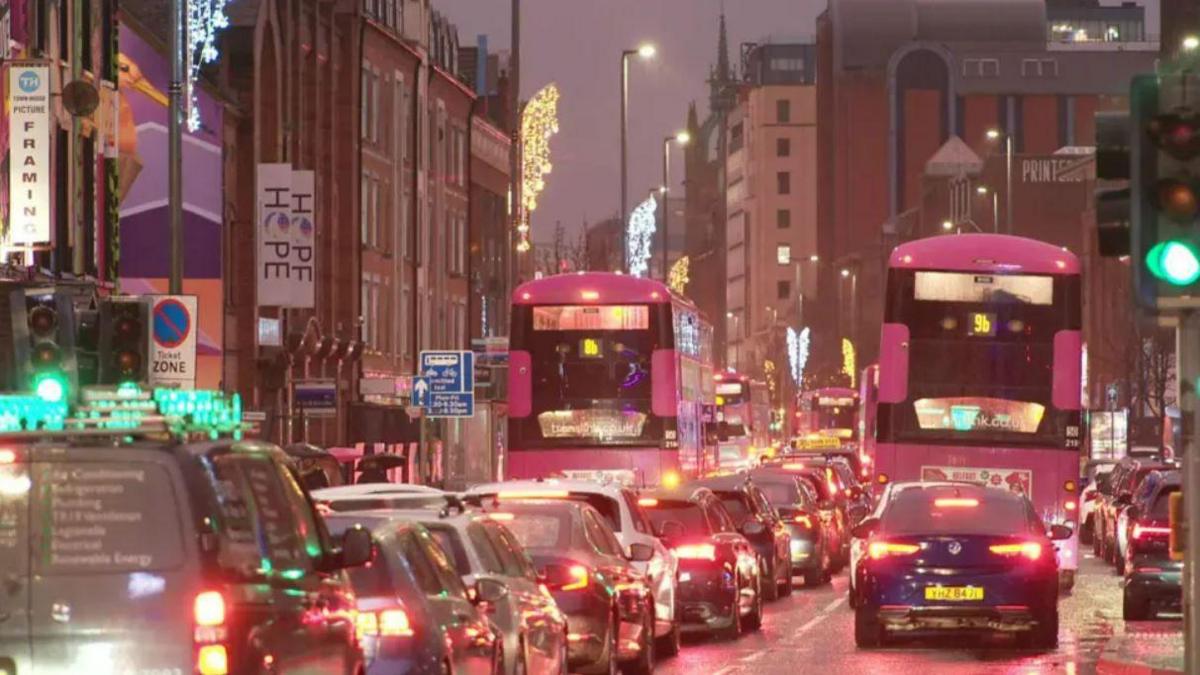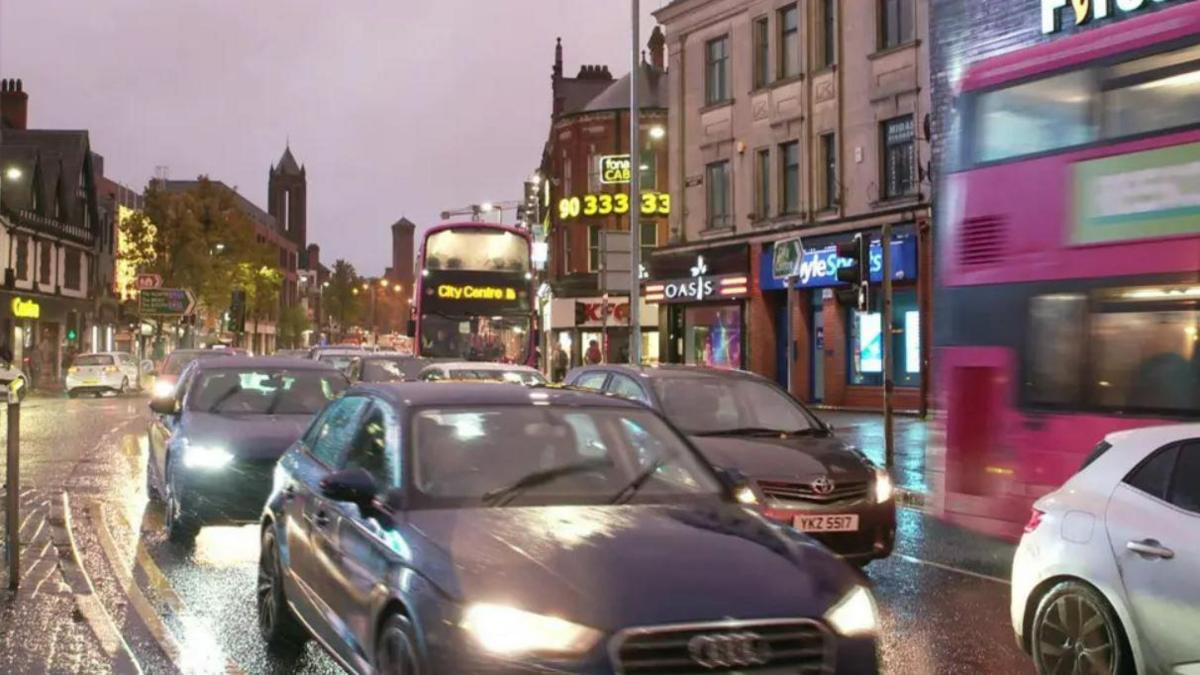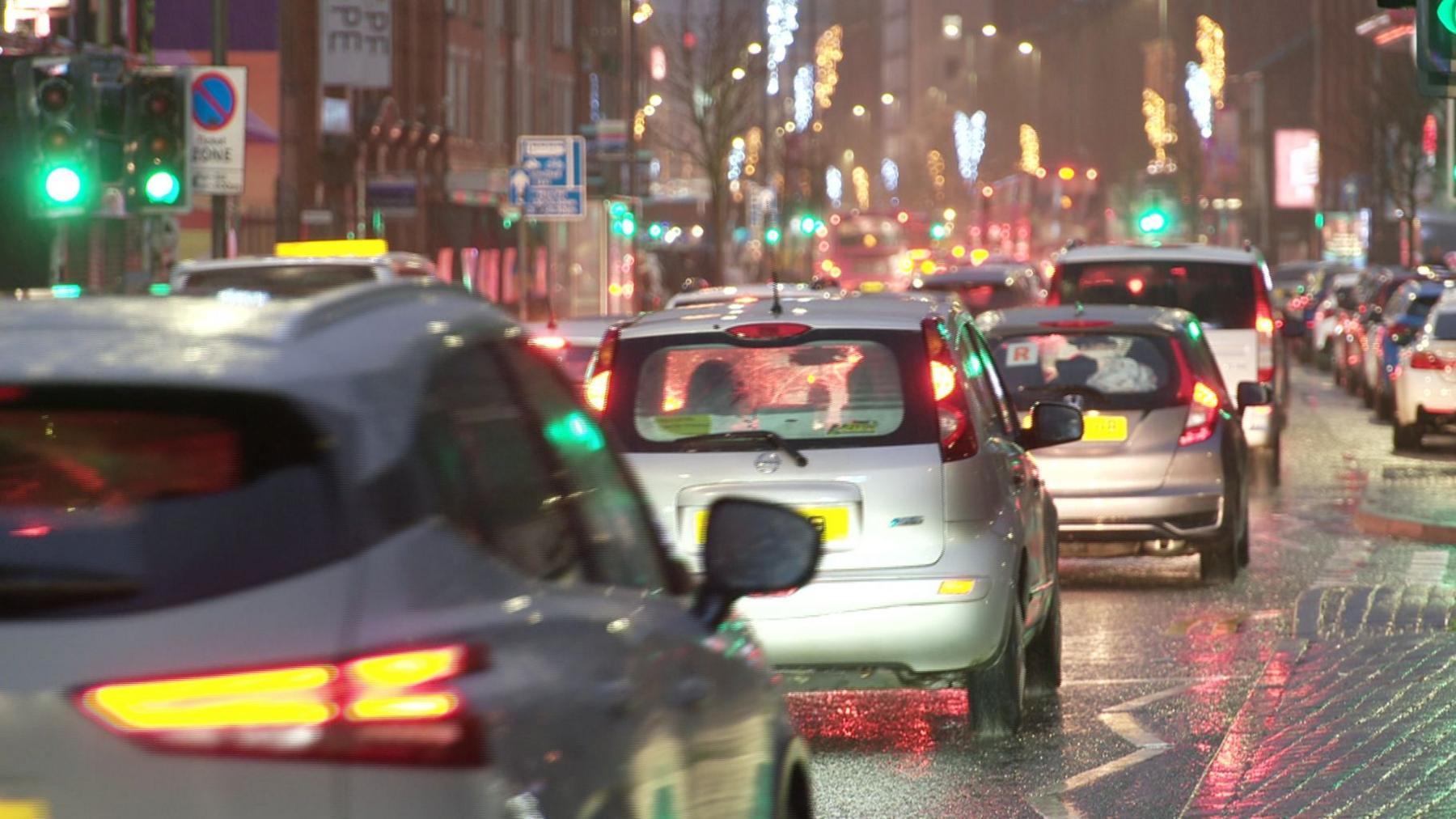Expect congestion if you drive into Belfast, says minister

Infrastructure minister John O'Dowd claimed 'there are too many cars and too limited a space'
- Published
Stormont's infrastructure minister John O'Dowd has said that anyone driving into Belfast city centre should "expect congestion".
He was speaking after motorists complained of several weeks of heavy rush hour traffic in the evenings.
Earlier, a senior DfI official suggested that people should consider working from home one day per week.
Alongside these measures, the Department for Infrastructure (DFI) said it is looking at road engineering measures, public transport interventions and providing the public with information.

The Department for Infrastructure says Belfast's road network is over capacity
'Consider other options'
Speaking in the Assembly on Monday, O'Dowd told MLAs that he has established a strategic oversight group to consider what can be done to ease congestion at peak times.
Answering an urgent oral question from the SDLPs Mathhew O'Toole, O'Dowd appealed to motorists "to consider other options they can take to avoid congestion, such as public transport, park and ride, active travel, or if possible, planning their journey to use an alternative route or avoid peak times."
He added: "The fact remains there are too many cars and too limited a space, so therefore each of us have to make a decision in terms of how we deal with that.
"If you do travel into Belfast city centre, using a car, you should expect congestion, and that leads to congestion for other people as well."
Road closures
Meanwhile, speaking to BBC Radio Ulster's The Nolan Show, Colin Woods, the DfI's deputy secretary, responded to queries on various road closures across the city.
"If people would use public transport or work from home one day a week even, you would start to see significant reductions in congestion," he said.
However, Clare Guinness CEO of Belfast Chamber of Commerce, told BBC Radio Ulster's Evening Extra, that that suggestion was "pretty shocking".
She said the festive period is a make-or-break period for businesses.
"A lot of retailers, in particular, hotels and leisure operators really rely on this period, it makes their year. At a time when we need the shops to be busy, we don't need anything that would reduce spending.
"So, if people are at home, they're not spending money, they're not buying lunch or going out for a drink. They're not doing a bit of shopping so all of that will reflect negatively on businesses," she added.
Ms Guinness said a lack of planning for roadworks had not helped the traffic issues.
"I think someone needs to look at the scheduling and I think they need to look at practical interventions that will make a difference tomorrow," she said.
Mr Woods was questioned on Nolan about roads across the city.
Durham Street
"I have acknowledged that the closure of Durham Street has had a significant impact on traffic and so we have taken a number of actions to try and make changes where we can," he said.
Mr Woods said investments, such as Belfast Grand Central Station, were what would make a material difference to traffic congestion.
He described the new station as a "game changer" and said it was "precisely the sort of investment that is needed" when considering long-term solutions.
Sydenham Bypass
Mr Woods said the department was concerned that the Sydenham Bypass would need "emergency closures" over the winter if the work did not go ahead this year.
"We have delayed that work from previous years precisely because we wanted to try and avoid the traffic impact, but this year we did not believe we could wait," he said.
"We will always act where we think it is necessary from a structural integrity perspective of the road and to protect safety."
Mr Woods accepted it was challenging but said the department kept the closure to weekends.

Mr Woods said investments, such as Belfast Grand Central Station, are what will make a material difference to traffic congestion
Grosvenor Road
Road users are now unable to turn left from Great Victoria Street on to the Grosvenor Road.
Mr Woods explained this was a "pedestrian safety" issue as the department had to remodel the junction "to cope" with the numbers of pedestrians leaving Belfast Grand Central Station.
He noted it was under "close" review and that there were other routes onto the Westlink.
Dublin Road
When asked why the lanes on the Dublin Road were reduced from four to one, Mr Woods said some of the measures had been in place for a long period of time.
He said the cycle lane was introduced at the start of the Covid-19 pandemic to create "safe cycle routes for people".
Mr Woods added that an additional bus lane was added to the road so that if there was congestion, buses could still travel along Great Victoria Street and through Shaftesbury Square.
There is now parking, a cycle lane, bus lane and a lane for general traffic.
What action has the DfI taken?
Road engineering measures, such as:
Traffic flow helped on Great Victoria Street by taking out a "loop"
A yellow box on Great Victoria Street at the end of Glengall Street has been removed
Sequencing of the junctions around Grosvenor Road, Fisherwick place and Great Victoria Street have been changed
Public transport interventions, including:
Sprucefield Park and Ride services have been increased at peak times
Buses moved away from temporary stops on Bedford Street
Working with the police to stop blockages of yellow boxes
Providing the public with information on traffic conditions through:
Traffic Watch NI website
Traffic Watch X account
'Try to avoid peak times'

Colin Woods said a car share initiative would not solve the current congestion issues
At peak busy times, such as the evening rush hour, Mr Woods said there was 10-15% of over capacity on the road network.
"The best advice I can give is to think carefully about our journey choices, if we can take the train or bus, or walk or cycle into Belfast city centre," he said.
"If we do need to drive, and many people do for all sorts of reasons, try and avoid travelling at peak times or stagger our journeys because if there are fewer vehicles on the road the traffic will flow better.
"The other main thing is that if we are driving please don't block junctions or yellow boxes because they are there for a reason."
Mr Woods said a car share initiative could be part of transport policy in the future but it would not solve the current traffic congestion issues.
Related topics
- Published6 December 2024
